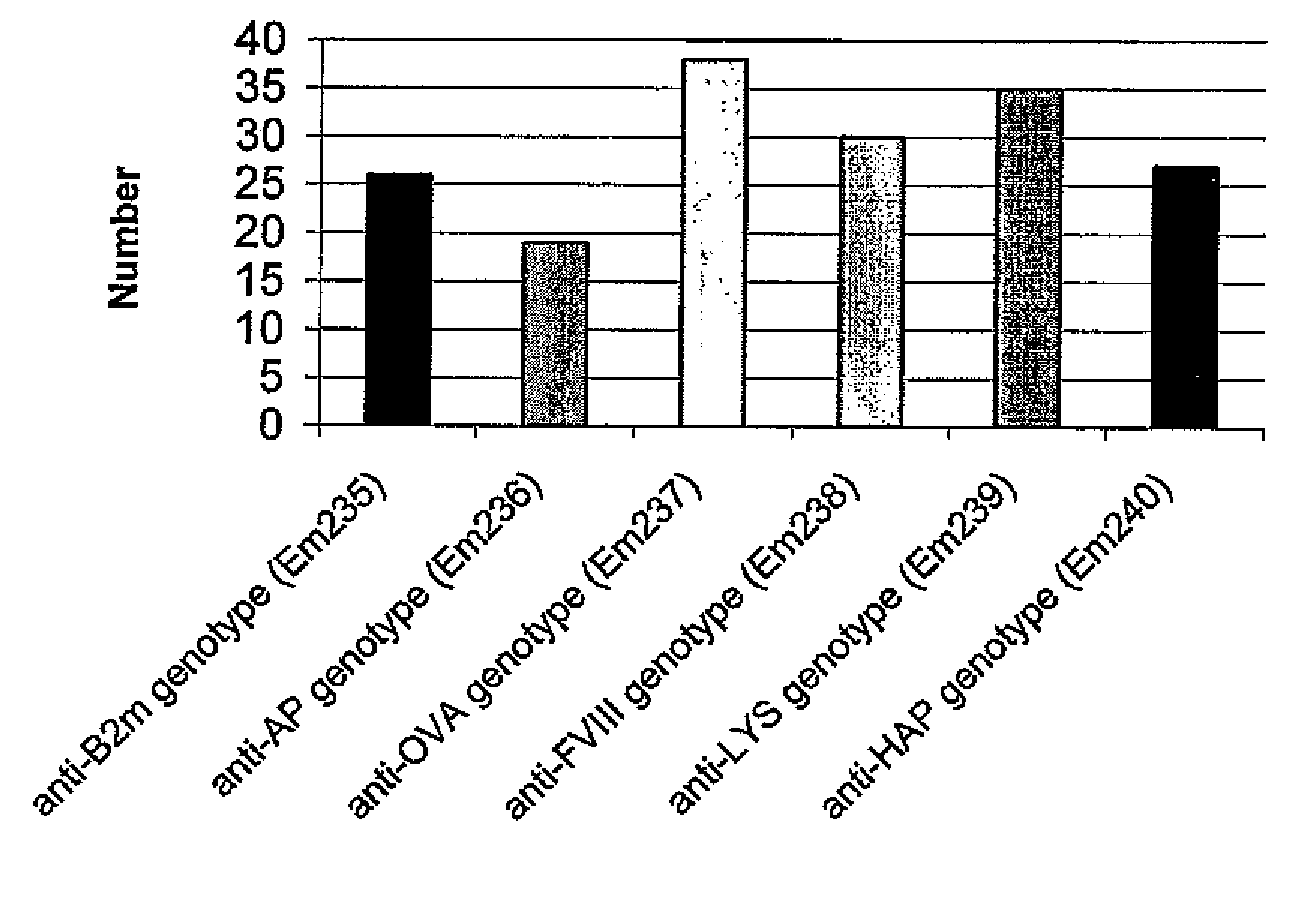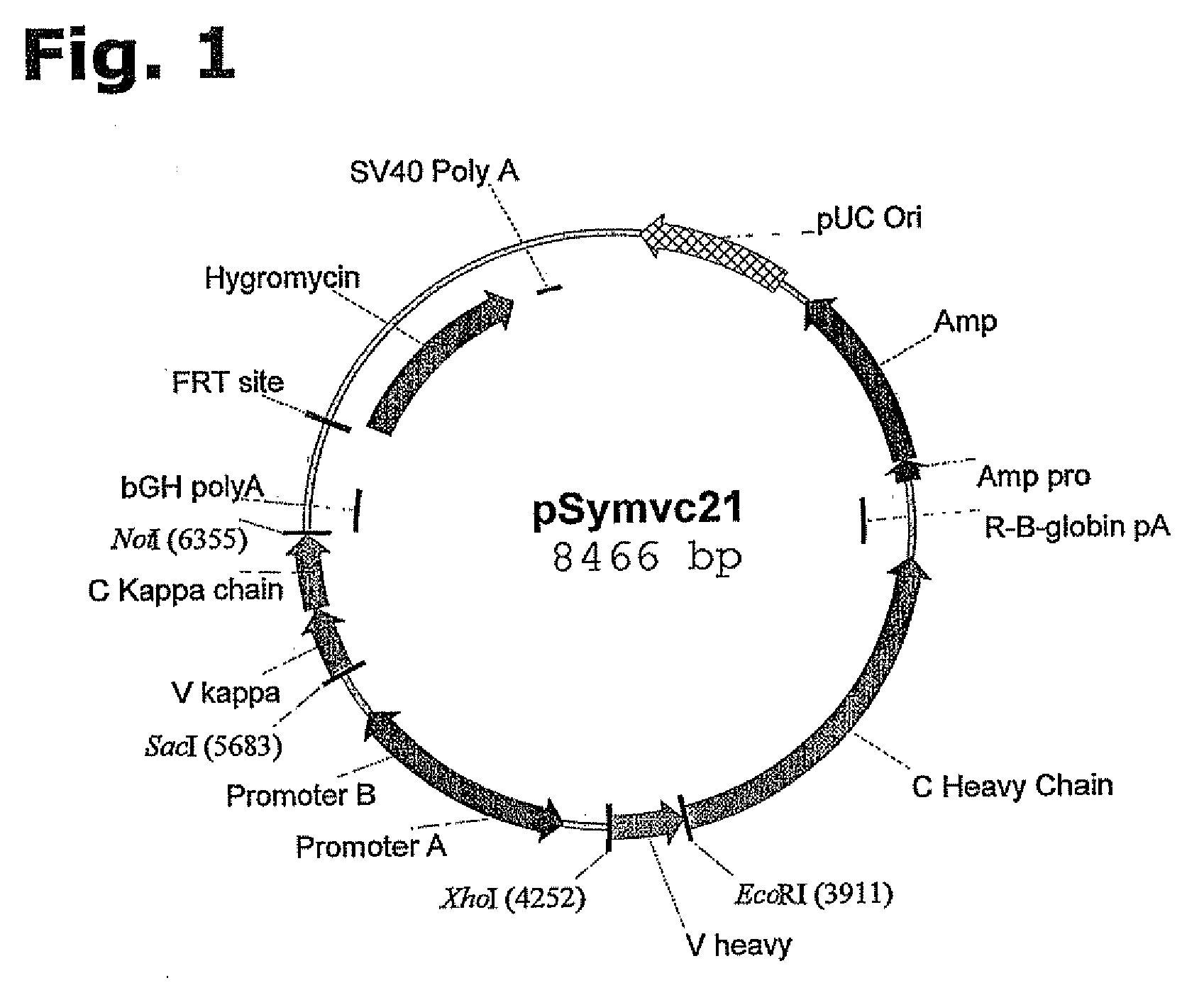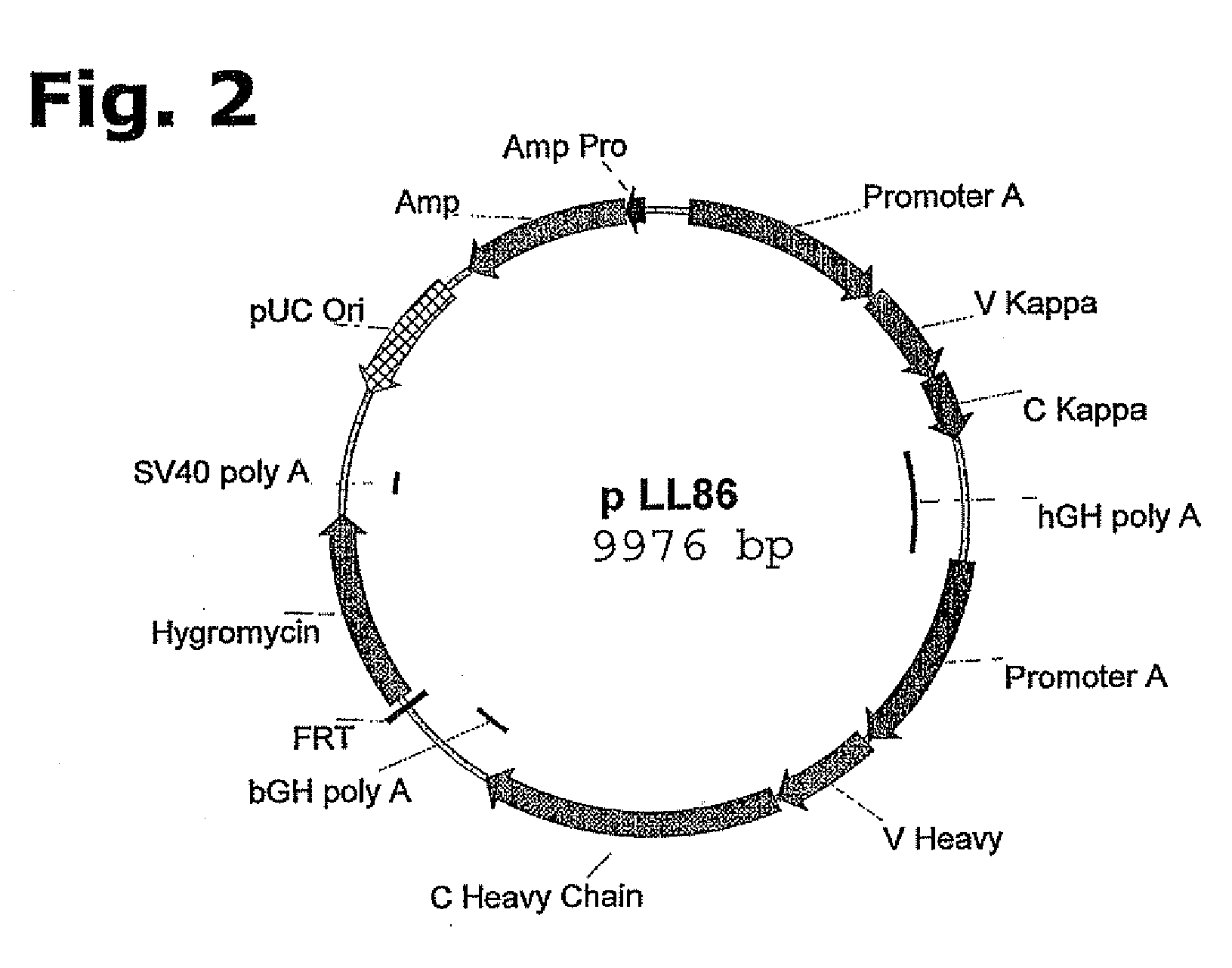Method for Manufacturing Recombinant Polyclonal Proteins
- Summary
- Abstract
- Description
- Claims
- Application Information
AI Technical Summary
Benefits of technology
Problems solved by technology
Method used
Image
Examples
example 1
Site-Specific Integration Versus Random Integration
[0194]For the following transfection experiment, the CHO Flp-In cells (Invitrogen, Carlsbad, Calif.) were used. The efficiency of the system was tested using human secreted alkaline phosphatase (SEAP) as a reporter gene. Two plasmid constructs were prepared:
1. SEAP inserted into pcDNA3.1 hygro+ (Invitrogen, Carlsbad, Calif.) (for random integration)
2. SEAP inserted into pcDNA5 / FRT (Invitrogen, Carlsbad, Calif.) (for site-specific integration)
[0195]The two plasmid constructs were very similar with respect to regulatory elements, i.e. promoter, polyadenylation etc. which made it possible to, use the plasmids for comparing random integration with site-specific integration.
[0196]CHO Flp-In cells were transfected with plasmid construct 1 alone or plasmid construct 2 together with the recombinase-encoding plasmid pOG44 according to the procedure described by Invitrogen. Transfectants were selected using hygromycin and the production of SE...
example 2
Design and Preparation of an Expression Vector for Site-Specific Integration in a Host Cell
[0198]An expression vector suitable for site-specific integration into a hot spot chromosomal region of a host cell may be assembled comprising the following DNA elements:
a) an FRT recombination site linked to the hygromycin resistance gene,
b) a pUC origin of replication,
c) an ampicillin resistance gene (bla),
d) a bla-promoter allowing expression of the ampicillin (bla) resistance gene,
e) gene(s), encoding a protein of Interest (GOIs),
f) promoter(s) allowing expression of the GOI, and
g) optionally, additional transcriptional or translational regulatory elements, such as enhancers or UCOE's, for increased expression at the site of integration or an IRES.
[0199]To provide a better understanding of the construction of the expression vector, each of the elements are described in more details:
a) An FRT recombination site linked to the hygromycin resistance gene for Flp recombinase-mediated integrati...
example 3a
Evaluation of Polyclonality Preservation in Cell Cultures Generated by Bulk Transfection of a Sub-Clone from the CHO-Flp-In Cell Line with the Mini Six Library
(a) Sub-Cloning of “Original” CHO Flp-In Cell Line
[0283]The original CHO Flp-in cell line (Invitrogen) was cultured as described (Example 3 section e.1). After trypsination cells were counted and plated with 1 cell per well in a 96-well culture plate. Approximately 14 days later 20 wells with single colonies were identified and cells were trypsinated and transferred to 24-well plates. One of the sub-clones, CHO-Flp-In clone 019, was selected for future studies after characterization of growth behavior as well as expression levels.
(b) Bulk Transfection and Selection of Cho-Flp-In Clone 019 Cells
[0284]Transfection was performed in triplicate, and selection of the CHO-Flp-In clone 019 cells were essential carried out as described (Example 3, section e.2 and e.3), with the exception that a Neomycin selection marker replaced the Hy...
PUM
| Property | Measurement | Unit |
|---|---|---|
| Nucleic acid sequence | aaaaa | aaaaa |
| Level | aaaaa | aaaaa |
Abstract
Description
Claims
Application Information
 Login to View More
Login to View More - R&D
- Intellectual Property
- Life Sciences
- Materials
- Tech Scout
- Unparalleled Data Quality
- Higher Quality Content
- 60% Fewer Hallucinations
Browse by: Latest US Patents, China's latest patents, Technical Efficacy Thesaurus, Application Domain, Technology Topic, Popular Technical Reports.
© 2025 PatSnap. All rights reserved.Legal|Privacy policy|Modern Slavery Act Transparency Statement|Sitemap|About US| Contact US: help@patsnap.com



